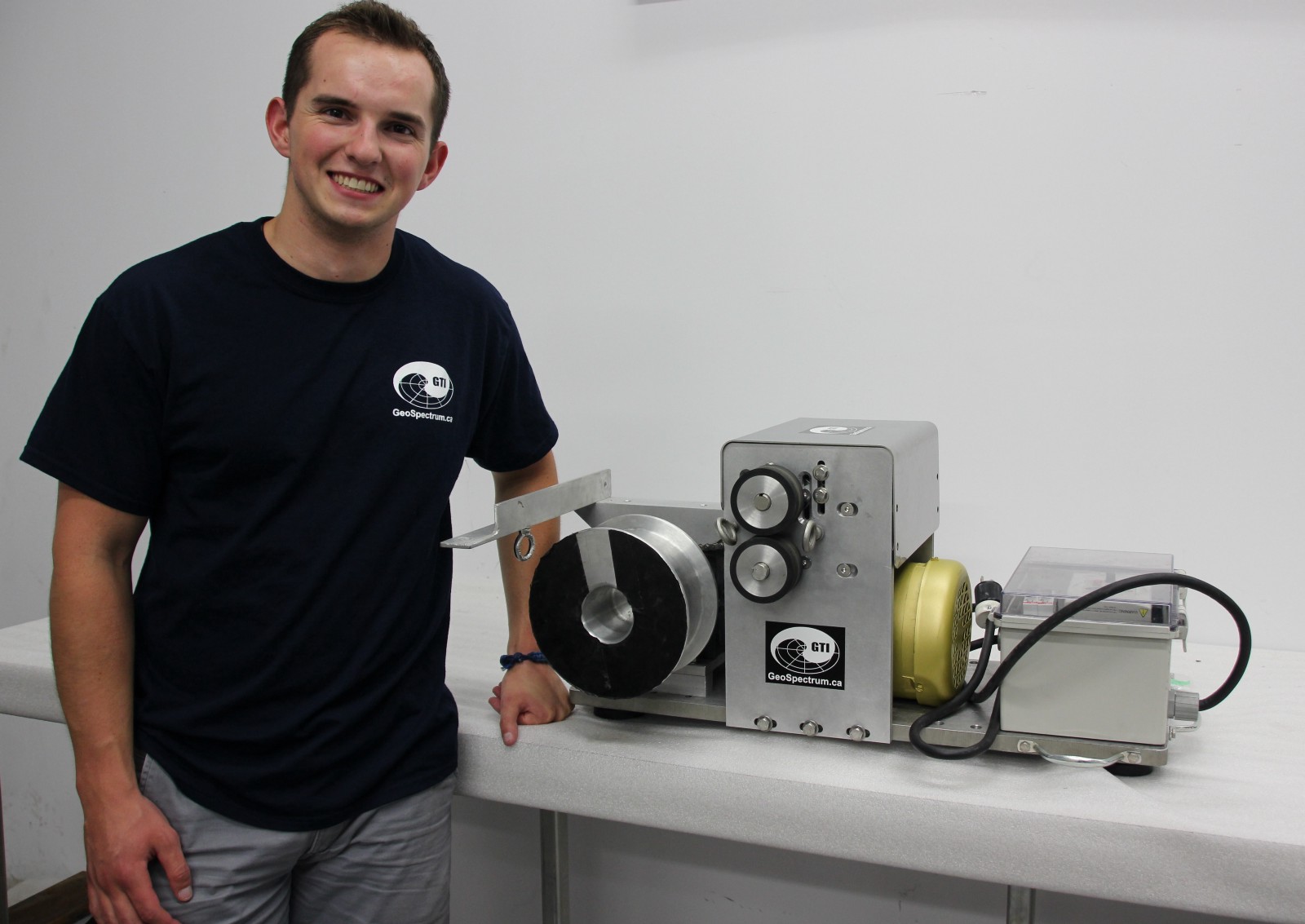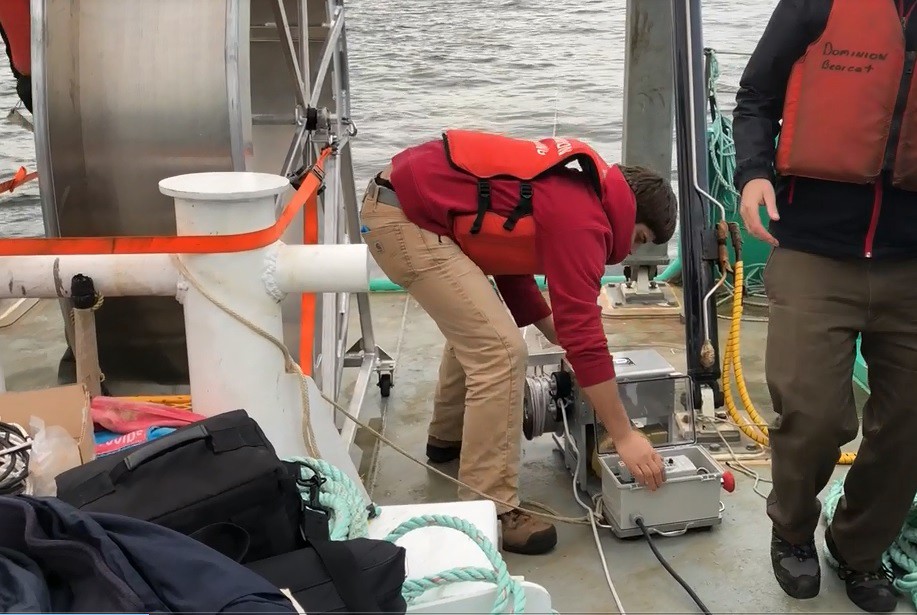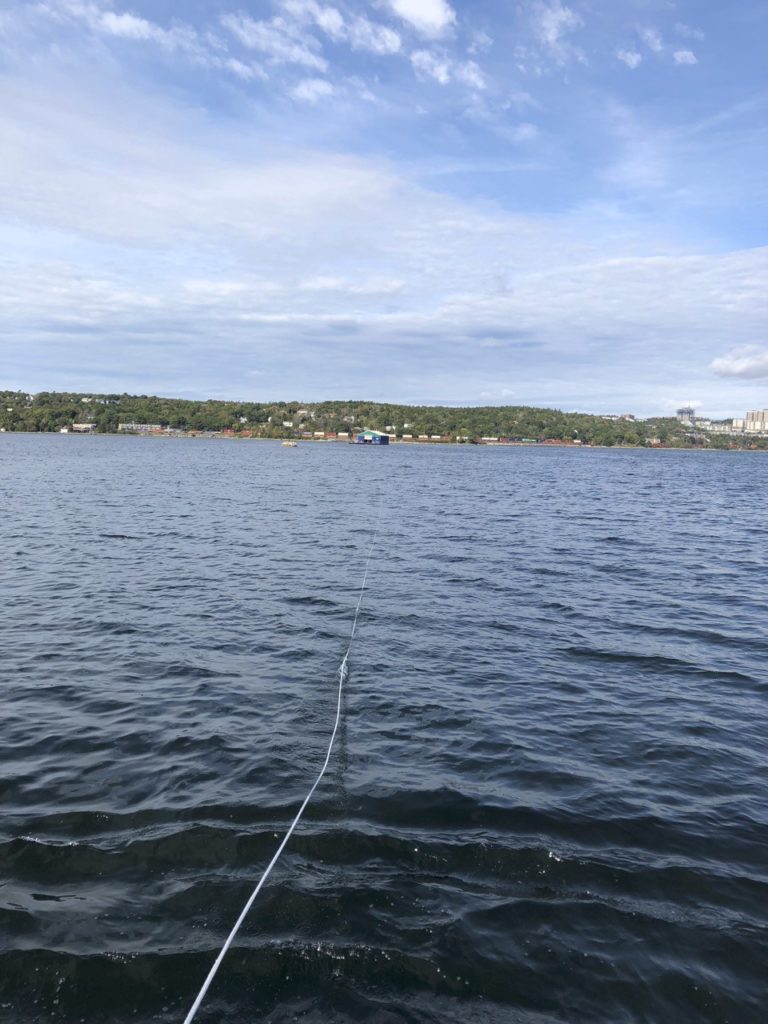Dartmouth company uses winch designed by co-op student

Nick Zachernuk, an engineering student at Dalhousie University, designed and built this winch.
When GeoSpectrum Technologies was looking for a new way to test underwater acoustic hardware, an engineering student at Dalhousie University helped come up with the solution.
During a co-op placement earlier this year, Nick Zachernuk designed and built a winch now being used by the Dartmouth company to assess an acoustic receiver. Zachernuk’s four-month term was subsidized by the province’s Energy Training Program.
“It’s very valuable to companies to get young, innovative talent to help us solve problems,” says Arnold Furlong, who is responsible for Business Development, Commercial at GeoSpectrum.
Under the Energy Training Program, small and medium-sized companies in the Nova Scotia energy sector can receive wage support to hire post-secondary students and recent graduates. The aim is to connect young Nova Scotians to jobs in the sector through specialized training and work experience.
“Our students, recent graduates and our energy sector have great potential and government has a role in helping young Nova Scotians make the most of opportunities,” said Energy and Mines Minister Derek Mombourquette. “A strong energy sector supports inclusive economic growth for all Nova Scotians and gives our brightest young minds the chance to find fulfilling careers at home.”

The winch is used on a fixed platform during recent field testing of an acoustic receiver.
GeoSpectrum has taken part in the program for the past four years. During Zachernuk’s term this spring and summer, he was part of an engineering team tasked with developing a cost-effective method to test the receiver at an earlier stage.
The Dalhousie student’s role in the project was to design and build a device that allows the receiver to be tested underwater in a low-speed, controlled-towing environment.
The hardware, called the Low5 array, has various potential uses, including marine mammal monitoring and coherent seismic source testing.

The acoustic receiver is towed at low speed in the controlled environment of Bedford Basin during field testing.
Furlong says evaluating a receiver or sensor like this one would normally be done at a later stage of development and use an unmanned underwater vehicle, or UUV.
“To hire a UUV just to test our product is quite expensive,” the Business Development lead says. “Our engineering department devised a concept for testing the sensor which involved putting the winch on a vessel and towing the sensor toward the vessel to simulate towing by a UUV.”
Field tests using the winch have been underway since late summer and will continue for another six months to a year.
Nick Zachernuk says the winch project was “a very rewarding experience” because it was his first design project outside of school, and first time using the design software involved.
“Throughout the project I was supervised by a colleague who was able to answer all my questions, but the project was mine to complete,” the co-op student says. “I had a definite a sense of accomplishment as I was able to take the project from the initial design stage to the preliminary testing stage.”
A project — and a program — that not only provided a student with valuable experience but is helping a company refine new technology.


